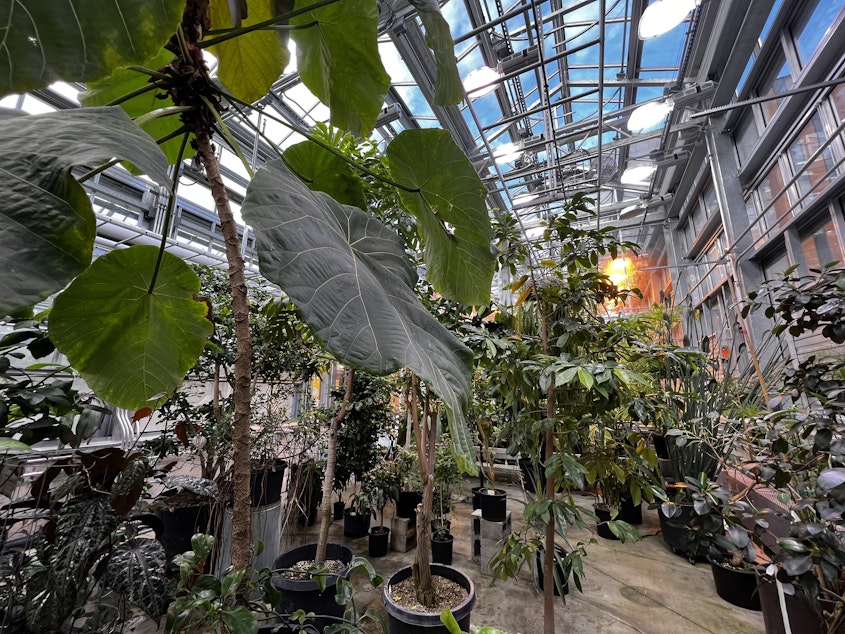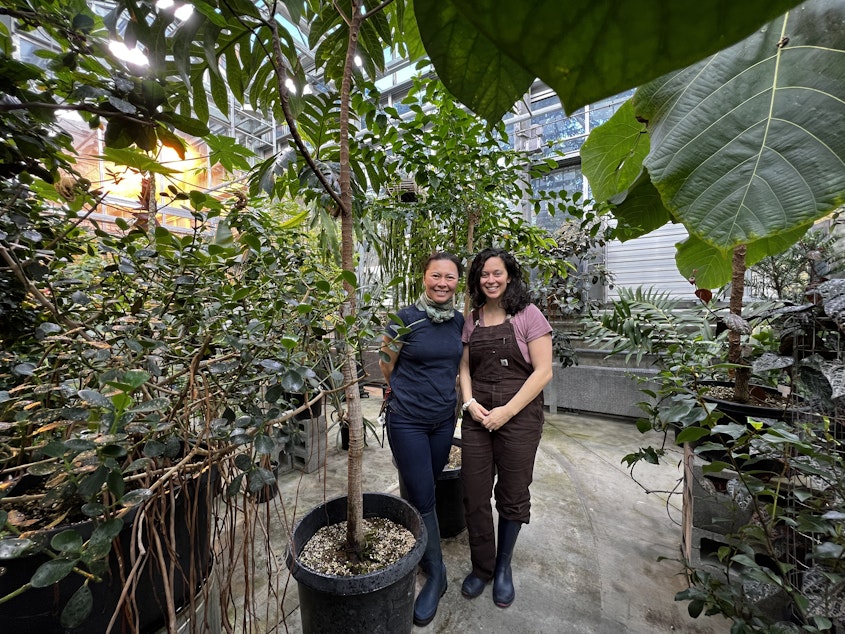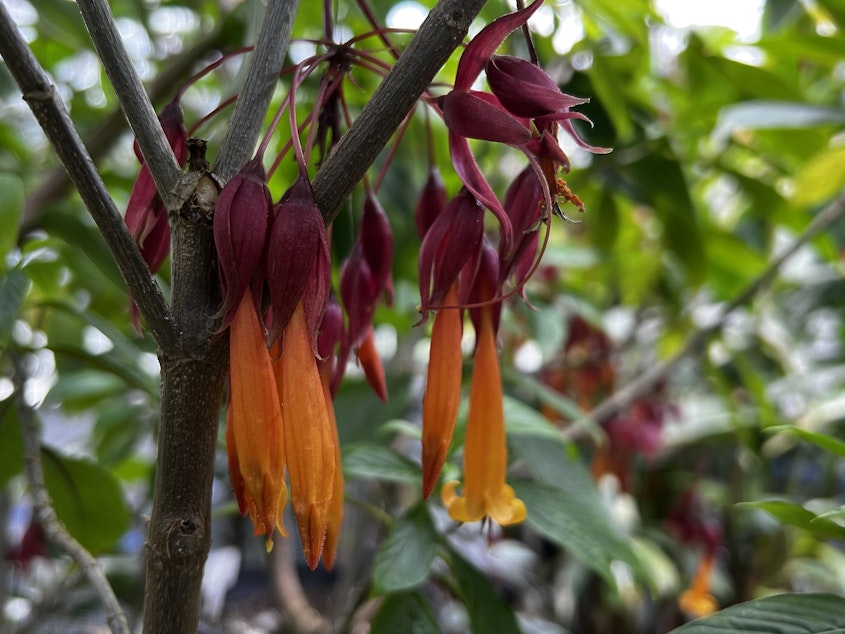Where the wild things grow – a visit to the new UW greenhouse

If you’re riding your bike down the Burke-Gilman Trail through the University of Washington campus, you’ll cruise by a long row of glass buildings.
Over the last three years, the University of Washington has been moving its extensive plant collection from its Botany Greenhouse in Redmond to this new 20,000-foot greenhouse on campus. This week, the University of Washington opens the upgraded greenhouse to the public.
The collection now has 6,000 plants encompassing 3,000 species, making it one of the most diverse collections in the country.
The greenhouse originated as a collection of medicinal herbs and plants used in the pharmacology and toxicology programs at the university. In the 65 year since, the collection has grown to include unique plants from remote corners of the world, including prehistoric ferns.
"A standout in here is our giant ferns," said Melissa Lacey, a plant tech at the greenhouse. "These are babies, and the fronds are maybe 10 feet now, but they're going to get bigger."



Various plants are used for biology classes at the university, but the collection is also used as a conservatory, with plants that have since disappeared from their native habitats, like the Deppea splendens from Mexico.
"This was collected in maybe the 80s or 90s," Lacey said. "And when someone went back, the habitat had been lost to plants."
The previous greenhouse required plants or students to commute to and from Redmond, where the collection was stored in one giant room. That meant arid desert plants shared the same space as humid tropical ones. The new facility has four distinct biomes for plant species – an arid room, two rooms for warm and cool tropical plants, and a "Tree of Life" room that includes food-producing plants like banana trees and coffee plants.
The greenhouse will be open to the public Thursdays from 12 p.m. to 4 p.m. starting Dec. 1. Entry is free. You can find more information on the greenhouse's website here.





